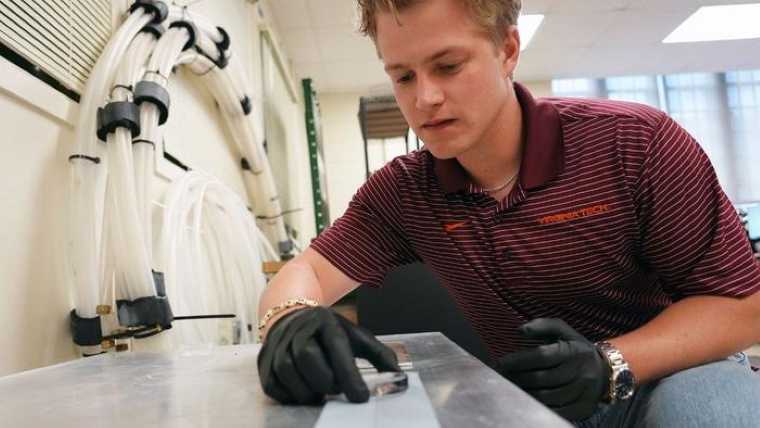
In a groundbreaking development, engineers at Virginia Tech have unveiled an innovative “ice slingshot” capable of propelling frozen discs of water across a grooved surface without any external force. This pioneering approach, which eliminates the need for harmful CO2, could pave the way for new energy generation devices and micro-transportation systems.
The announcement comes as researchers continue to explore the mysterious movement of the “sailing stones” in Death Valley, a phenomenon that has puzzled scientists for decades. Associate Professor Jonathan Boreyko from Virginia Tech’s School of Mechanical Engineering explained the process, noting that it relies on a scientific concept known as ‘Laplace pressure.’ Boreyko described the invention as a “Laplace slingshot,” though he noted that the term “ice slingshot” would suffice for the general audience.
Scientific Foundations and Historical Context
The study, which details the research team’s findings, draws on previous experiments that demonstrated the forceless propulsion of dry ice on a layer of vapor. These experiments showed that droplets of water on a superheated surface could levitate on their own vapor, a phenomenon known as the Leidenfrost effect. The Virginia Tech team extended this concept to ice, using simple geometric patterns to achieve self-propulsion.
Historically, the mysterious movement of rocks in Death Valley’s Racetrack Playa has intrigued scientists. In 2014, video evidence revealed that thin sheets of ice, formed from water that resisted seeping into the desert’s hard surface, facilitated the movement of these boulders. This natural occurrence inspired the Virginia Tech team to explore similar mechanisms in a controlled laboratory environment.
Testing and Mechanisms
Led by Ph.D. student Jack Tapocik, the Virginia Tech team conducted a series of experiments in Boreyko’s Nature-Inspired Fluids and Interfaces Lab. The “control” test involved placing ice disks on a smooth, featureless surface, which resulted in no directional movement. However, when the team introduced grooves of 0.25mm or 0.5mm depth in a herringbone pattern, the results were markedly different.
Boreyko explained that the etched aluminum surface allowed meltwater to flow along the grooves, guiding the ice disks in a specific direction. “A good analogy is tubing on a river except here, the directional channels cause the flow instead of gravity,” Tapocik noted. This directional flow mimics the behavior of Leidenfrost droplets, leading the team to refer to the surface as an “ice ratchet.”
“By rectifying the flow of the underlying meltwater, we achieve self-propulsion of the solid without resorting to an external force (i.e., no wind flow),” the researchers explained.
Potential Applications and Future Research
Looking ahead, the implications of this discovery are vast. Boreyko suggested that the technology could be used to develop energy generation devices by harnessing the small but measurable force of the self-propelled ice. “We already know that dry ice (CO2) that self-propels on its vapor in a circular motion can generate energy by turning an attached turbine,” he explained. The ice slingshot could offer a more environmentally friendly alternative, replacing CO2 with H2O.
Another promising application involves de-icing surfaces such as airplane wings and windows. Boreyko’s team plans to test whether Laplace pressure can “slingshot” frost off surfaces once it has partially melted, potentially increasing the speed and energy efficiency of defrosting.
The study, titled “Self-Propelled Ice on Herringbones,” was published in ACS Applied Materials & Interfaces, marking a significant step forward in the field of fluid dynamics and materials science.
Conclusion
The Virginia Tech team’s innovative approach to self-propulsion not only sheds light on the enigmatic “sailing stones” of Death Valley but also opens new avenues for technological advancement. As researchers continue to explore the potential applications of the ice slingshot, the future of energy generation and transportation systems may be poised for a revolutionary shift.







